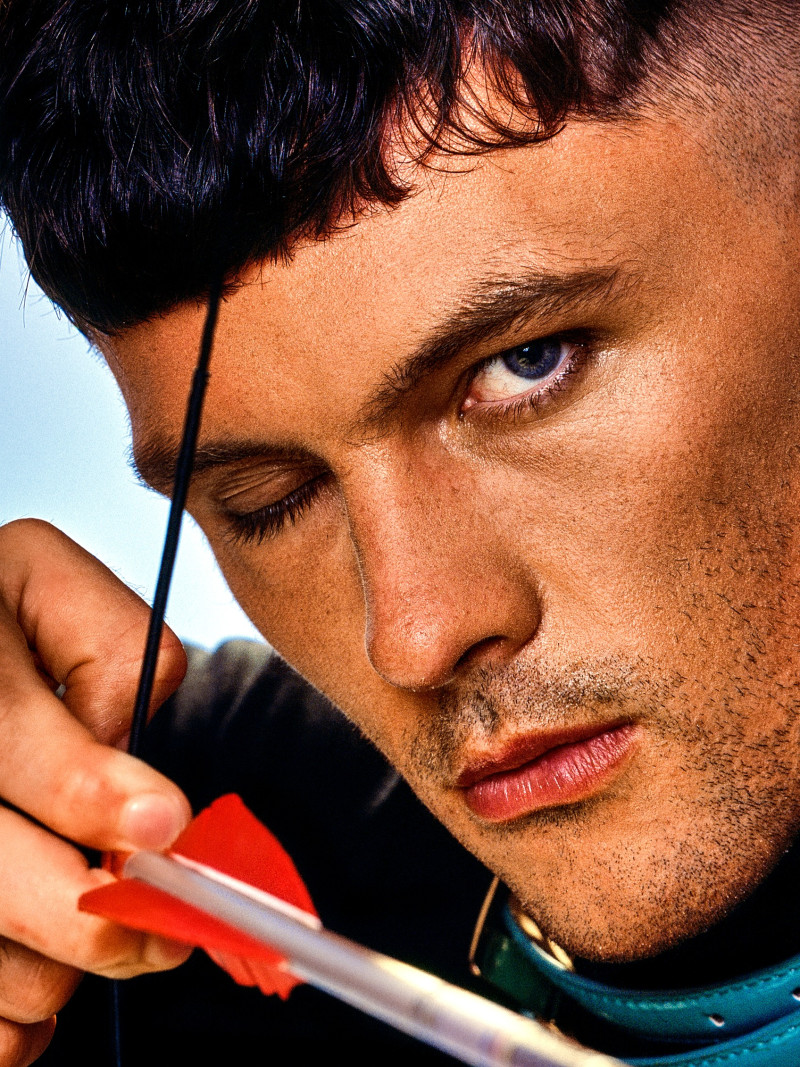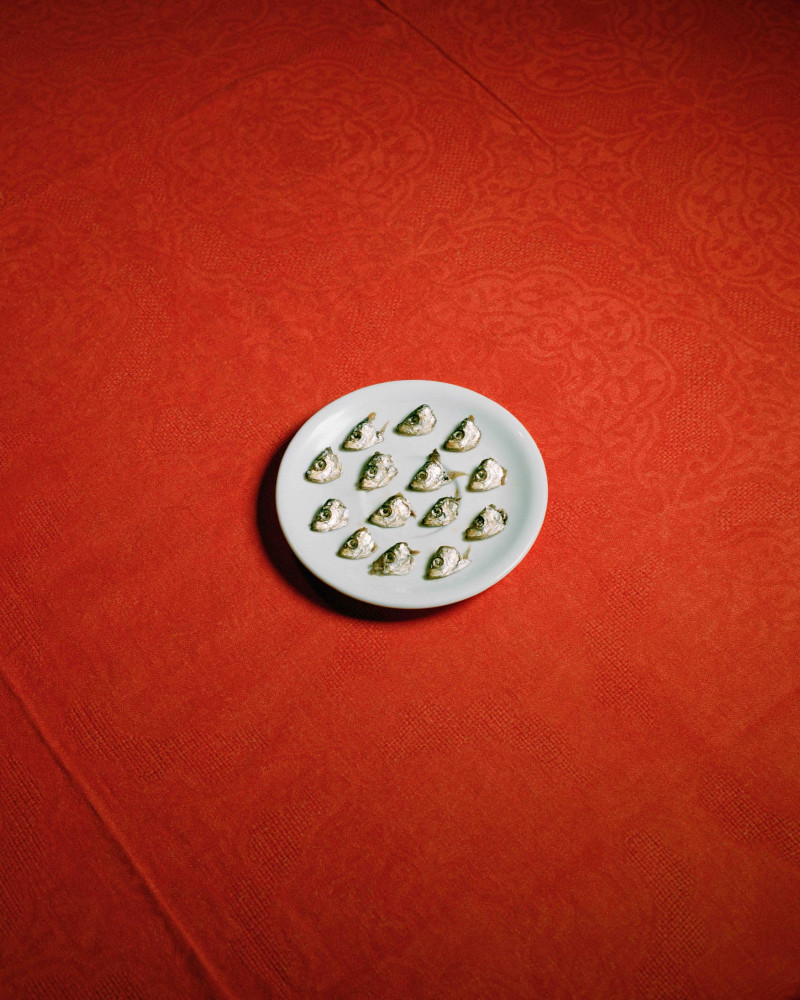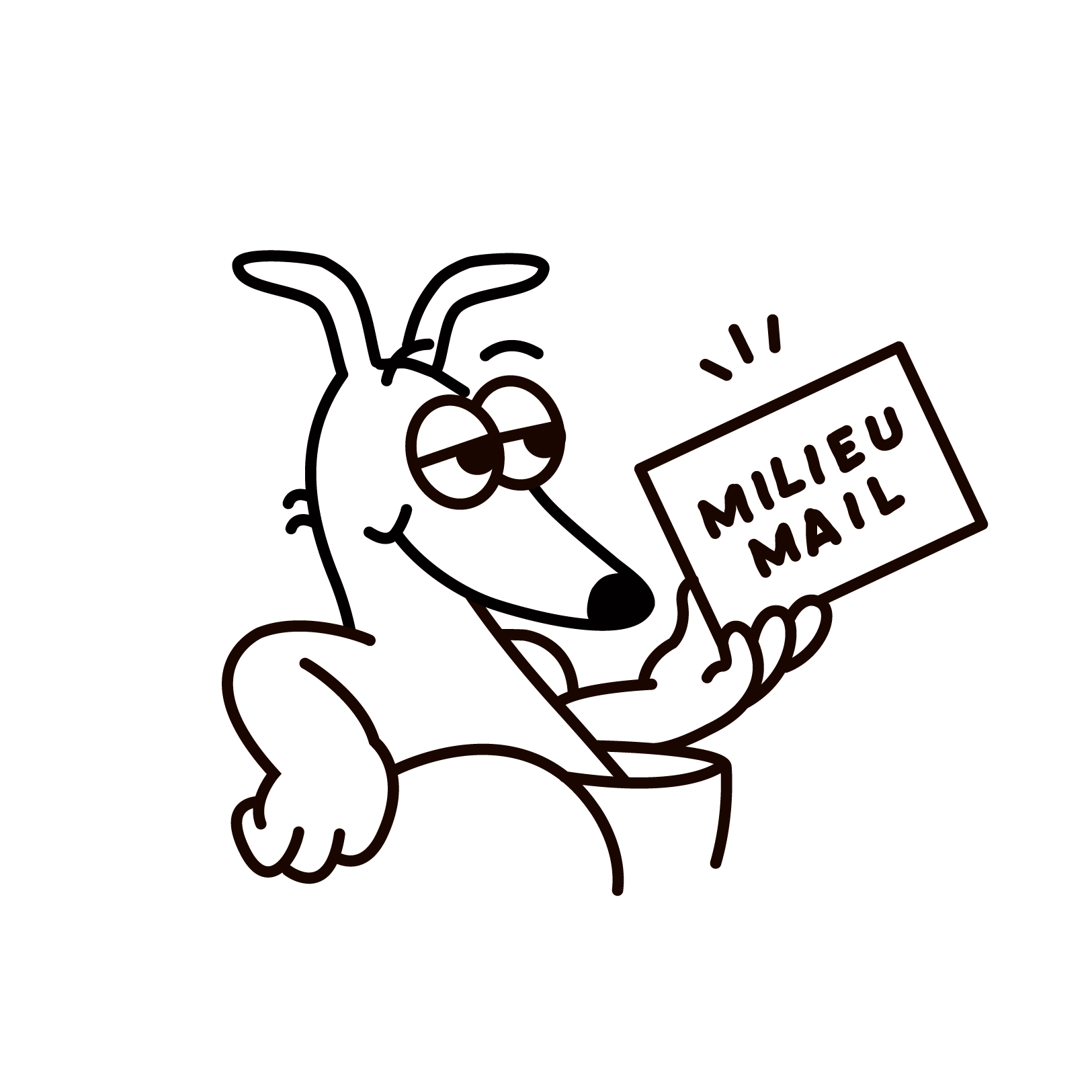Still Life with Marsha Golemac
Interview by Nick Smith
Photography by Morgan Hickinbotham
Marsha Golemac greets me with a huge smile as her puppy Raf starts sniffing my legs madly and nibbling on my fingers. She shows me into the beautifully curated living area and gives me a short tour of the house she shares with her partner Dan Hocking which doubles as their workspace.
Marsha is an amazing still life art director and has cemented her position as one of Melbourne’s most talented creatives working in the industry today. Her images create a powerful sense of intrigue and their composition is structured in an almost architectural way. Although she doesn’t quite believe it yet, they are works of art. We sit down on her couch to talk about growing up in the country, why collaboration is important and what being an artist means.
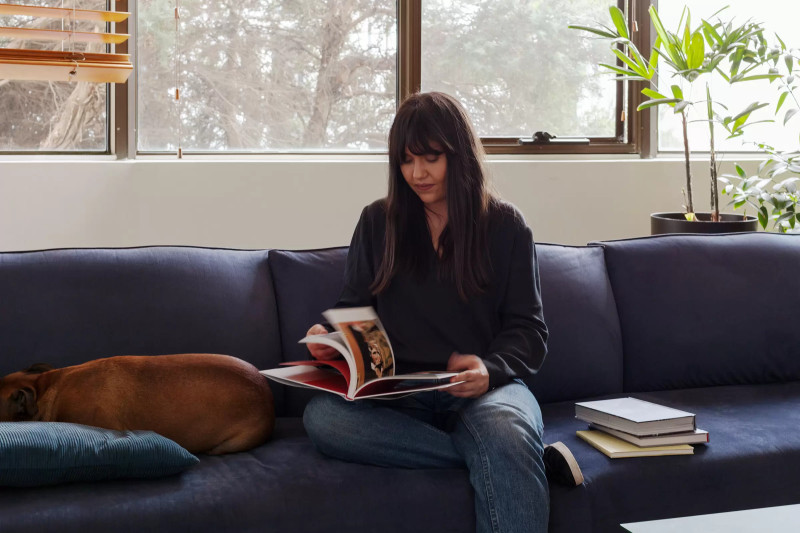
Marsha and Raf at home in Collingwood
Nick Smith: How’s your day been?
Marsha Golemac: I’ve got meetings all day for some new projects but so far it’s been good, despite the rain.
NS: I wanted to start by asking if you remember the first time you felt an emotional response that was triggered by an image or object?
MG: That’s hard. I definitely feel an emotional attachment when I see the work of Irving Penn, or Mapplethorpe’s ‘Flowers’. You know… simple, beautiful images. Nothing I’ve seen recently overly grabs me. I think we’re really fortunate — and sometimes not so fortunate — to live in a world that is so heavily image focused. With social media being so prominent and content constantly flying at you it’s really become that quick flick of the finger rather than time spent pondering over an image and really appreciating it.
NS: Do you think the over saturation of imagery online is a positive or a negative?
MG: I think it’s great for people like me who work in the industry and are able to show the world what we do. And it’s also fantastic for people who are trying to break into the industry and showcase their work. However it also has a negative side where you see images that are constantly replicated or stolen.
NS: Where did you grow up?
MG: I grew up in the country. Far away from the city. I was the only one in my family born here in Australia and I had a really great childhood growing up here but it also wasn’t so great living in the country.
NS: Were your parents creatives?
MG: No, both my parents came from a very poor village in Croatia and decided to escape that poverty with my brother and sister who were really little at the time. Mum was a cook who eventually became a chef and Dad worked in the trade so I guess in some sense sure… they were creative. School was not a creative place for me though. It was a very white community so I grew up thinking that sport and music were the only cool things to do. We weren’t really encouraged to create, but Mum and Dad built a house on a five acre lot just out of town so that became my refuge where I could experiment without the pressures of growing up.
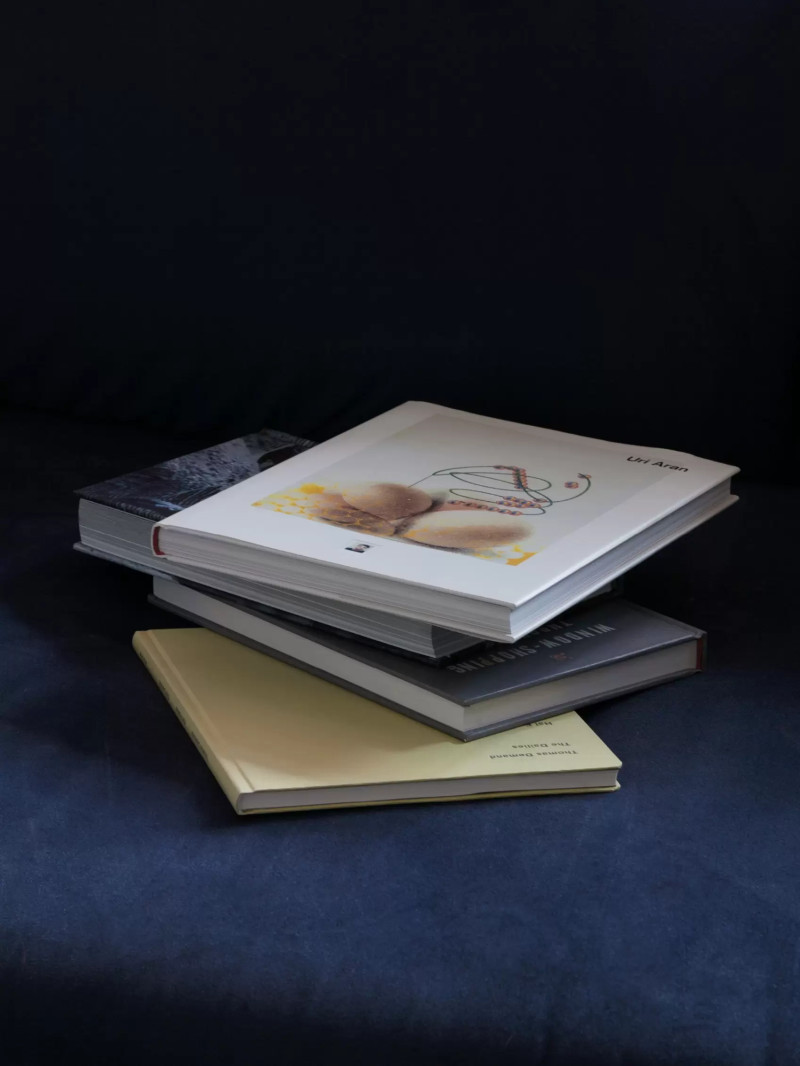
Books from Marsha’s library serve as daily inspiration
NS: Would you consider yourself creatively self educated then?
m.g.Yeah. I wish people had told me that I could be a designer or an architect though. No one ever mentioned it and I never had the opportunity to find out. The internet had just come out during my teens and I think if I’d maybe grown up in the city perhaps I would’ve been exposed to more. That’s one disappointing aspect I only learned about once I hit university. I even went for a bachelor of arts majoring in media and literature thinking they were the creative things I could do.
[Marsha’s partner Dan walks in]
MG: Nick, Dan. Dan, Nick.
DH: Hey mate.
NS: Hey, how are you?
DH: Good mate. Would you like a coffee or anything?
NS: Nah I’m okay. Thanks though.
DH: Alright. I’ll leave you guys to it.
NS: Nice meeting you.
DH: You too.
[Dan walks into the office]
NS: So, a lot of your compositions are quite structured and almost architectural in a way. Where does that influence come from?
MG: I travelled when I was younger and just naturally I was always drawn to architecture. My partner Dan is a photographer and mostly shoots architecture so whenever we travel together seeing all the architecture of a city is something we both find really interesting. There’s no real reason for it other than pure love.

‘Untitled’ Seoul by Dan Hocking. From a recent trip to South Korea
NS: Is the structure and attention to detail of your work something that extends to your personal life?
MG: I don’t think so. I don’t live the way that I create and I don’t want to live like that. It is work at the end of the day. Even though it’s a passion and I love what I do I want to come home and have a relatively simple space. I want to have more of a relaxed approach because being totally anal about everything twenty-four seven can be quite draining.
NS: So I read your essay on uncertainty as part of Word — Form. At the start you say: “You probably wouldn’t see my work in a gallery. Then again you wouldn’t refer to me as an artist.” Do you truly believe that?
MG: Yeah. Unfortunately. I don’t want to believe it but I think that comment is definitely a result of the anxiety I feel about what I do. People within the industry understand what it is that I do, but sometimes it’s extremely difficult to explain to other people what it is that I do and that it involves an artistic mind to create this work. I would love to get to a point where I could call myself an artist but right now I don’t have the courage to do that.
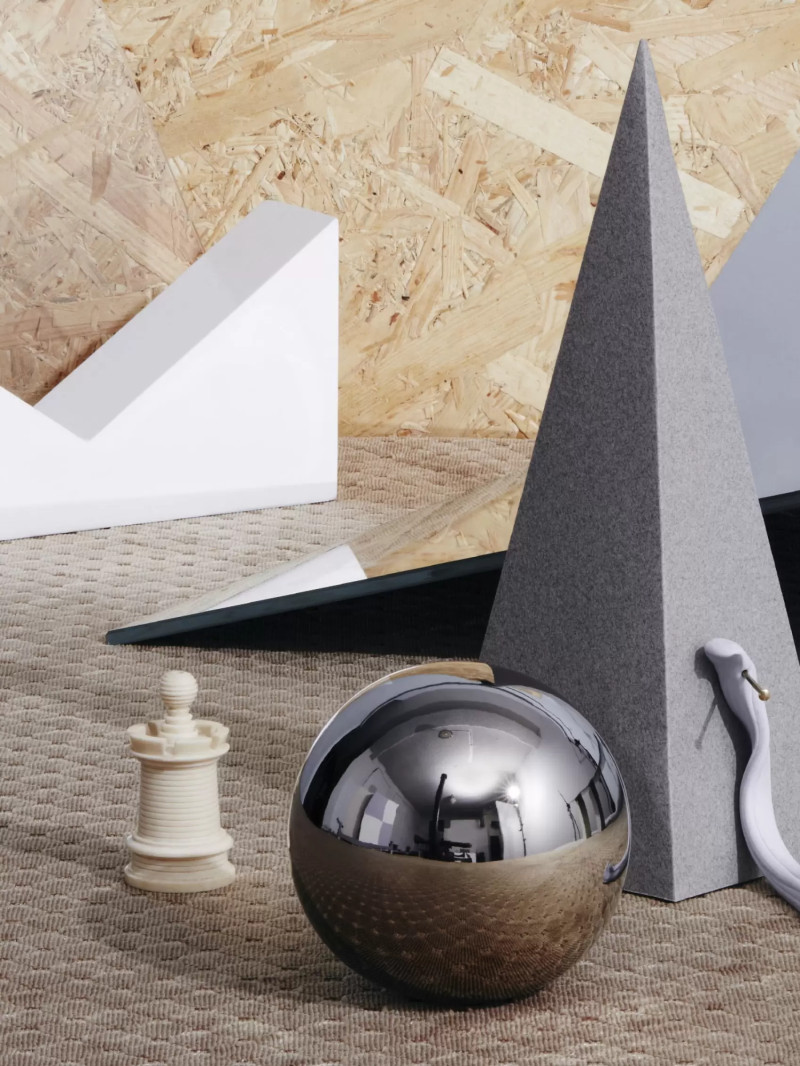
The Business of Fashion Magazine. Art direction by Marsha Golemac in collaboration with Studio Round. Photography by Haydn Cattach
NS: Okay. So you wouldn’t see some of your images or compositions as works of art?
MG: I do. But I don’t think the public would.
NS: That’s interesting. I definitely see them as works of art.
MG: Thank you. I guess when I create, I need a photographer to bring my work to life. An artist creates, places their work in a gallery, people view it and buy it. My work isn’t for sale and regardless of how much work I’ve put into it if the photographer just comes in at the end to shoot it, it’s still considered the photographers work.
NS: In the future would you like to create work that could potentially be shown?
MG: I do have an overwhelming desire to create work that doesn’t just fit within the still life world. But I still find that transition slightly problematic.
NS: So with the studio being in your home how do you create a separation between work and your personal life?
MG: It is good working from home but yes, you don’t switch off. I’m pretty good at being alone so although it’s lovely working in a collaborative environment with other people, I don’t crave it. I guess I’m very fortunate that Dan and I work really well together too. I think we both crave the evenings when we’ve had a big day and can literally just go from one room to the next and chill out. Right now this arrangement is working really well.
NS: Where did you and Dan meet?
MG: We met ten years ago through a mutual friend. It was literally a flip of the coin moment where I could’ve stayed in or gone out with my friend. I flipped a coin, went out with my friend and ended up meeting Dan.
NS: You actually flipped a coin?
MG: Actually flipped a coin. Legitimately. Yes.
NS: That’s amazing.
MG: Yeah. We met, and after a couple of weeks we moved in together. It’s been ten years now. We were doing completely different things back then and we’ve just sort of grown together.
NS: What were you doing before?
MG: At the time I was working as an assistant buyer for The Just Group and I think Dan was in marketing. I don’t know, he had quite a few different roles at that time.
NS: Nice. So is there a particular feeling you want to evoke with your imagery?
MG: First and foremost curiosity. I think if people look at the image and simply ask the question “What is that?” I’ve achieved something. Most of what I do, despite the fact it’s artistic, is advertising. It’s selling someone’s product or it’s a branding campaign but what I try to do is evoke a feeling or sense of curiosity which leads the viewer to see the product through a different lens. If I can get someone to go “What the fuck is that?” I think that’s pretty cool.
NS: Yeah definitely. It creates a dialogue with the viewer.
MG: Exactly. And at the end of the day the client wants their image to go viral, so if we just shoot a really simple campaign using the product, I don’t see that being very beneficial. It’s easy to shoot products on a white background but will that generate a conversation? Probably not.
NS: It amazes me how little thought goes into advertising campaigns sometimes.
MG: Yeah. It’s an investment for the client, but it’s so crucial. I think it’s really important to have strong branding, a good website and a good story. Yes it’s expensive for a small business but it’s such a good long term investment.

Artedomus Elba Campaign. Art Direction & Styling by Marsha Golemac. Photography by Haydn Cattach
NS: So, you collaborate on a regular basis with some incredible people. Can you tell me a bit about the creative community you’re a part of?
MG: When I first started out I joined forces with my good friend Brooke Holm who is a photographer now living in New York. I think her and I working together for such a long time was a wonderful entry point because we were fortunate to establish a relationship which was truly a collaboration. It wasn’t “I’m art directing and styling and you’re taking the photographs.” The conversation was mutual from the very beginning. I think because of that experience I like to approach all other jobs that way. I like to choose the photographers I work with based on how collaborative we can be together. I now take jobs based on how good the relationship and the process can be because that’s how you create the best work. I work with a lot of different photographers but I have my go-to’s purely because I know we’re going to have that hi-five moment at the end.
NS: You’ve worked across so many disciplines and mediums over the years. Is there anything new you’re hoping to experiment with in the future?
MG: Umm… What haven’t I tried? Well, an opportunity has presented itself recently to design a product. So that’s really exciting and nerve racking but when I get a bit of anxiety about stuff like that it normally means it’s going to be a good thing. I’d also love to work towards having my own show, but like I said earlier, there’s the challenge in figuring out how to make it work. So that’s happening in the background.
NS: What makes you happy?
MG: Oh… really simple stuff. This guy here… [Marsha’s dog Raf is sleeping on her lap] and my partner Dan. The three of us with a weekend to ourselves. Coffee, snacks, watching a movie…Ultimate happiness. Oh and travelling!
Nick Smith is founder and editor of Drop Magazine, an exploration of creativity, collaboration and people. For more of Marsha Golemac’s work visit her website marshagolemac.com.
To stay connected with Melbourne Milieu, please follow us on Instagram.
